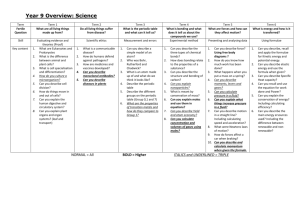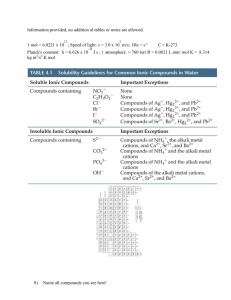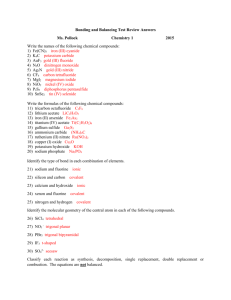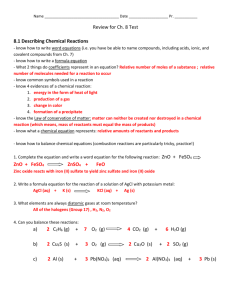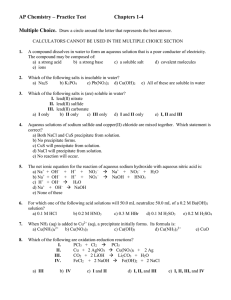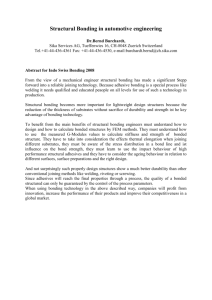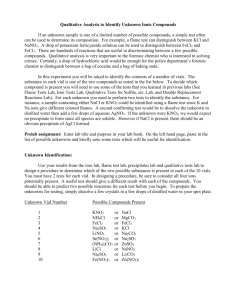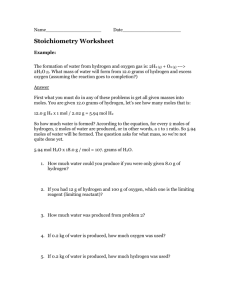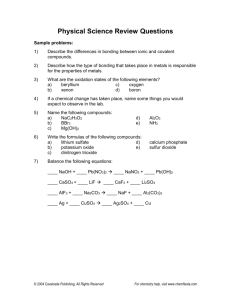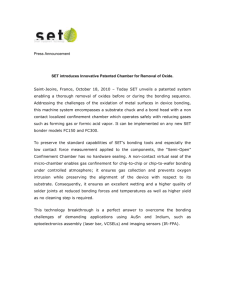Advanced Placement Chemistry Summer Assignment 2014
advertisement
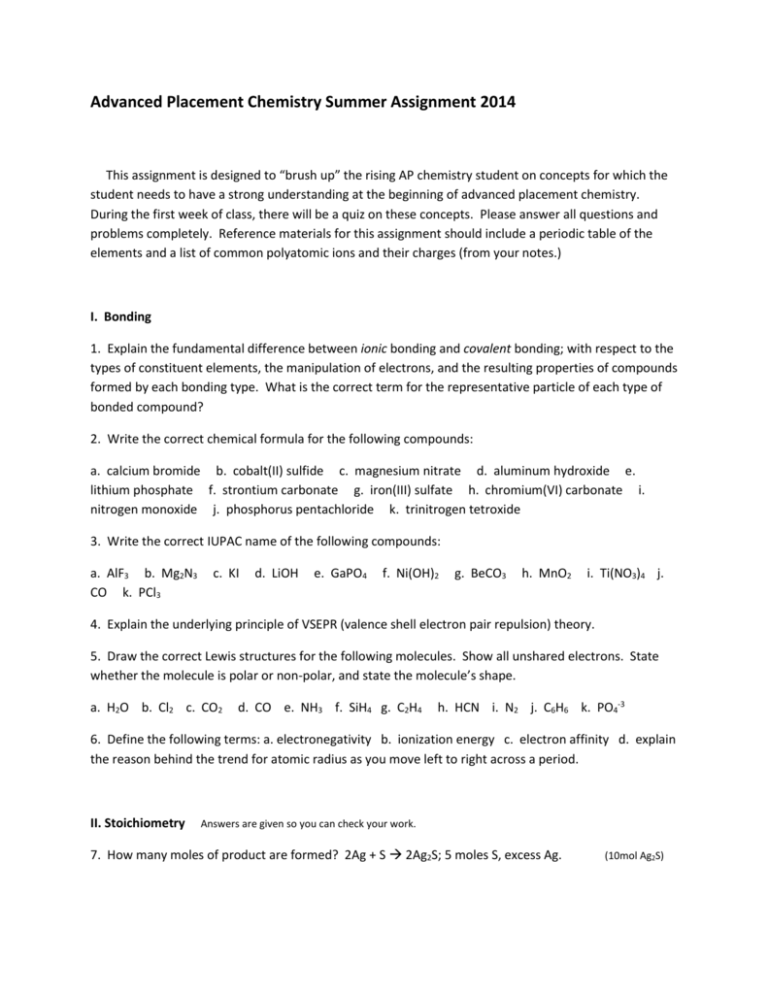
Advanced Placement Chemistry Summer Assignment 2014 This assignment is designed to “brush up” the rising AP chemistry student on concepts for which the student needs to have a strong understanding at the beginning of advanced placement chemistry. During the first week of class, there will be a quiz on these concepts. Please answer all questions and problems completely. Reference materials for this assignment should include a periodic table of the elements and a list of common polyatomic ions and their charges (from your notes.) I. Bonding 1. Explain the fundamental difference between ionic bonding and covalent bonding; with respect to the types of constituent elements, the manipulation of electrons, and the resulting properties of compounds formed by each bonding type. What is the correct term for the representative particle of each type of bonded compound? 2. Write the correct chemical formula for the following compounds: a. calcium bromide b. cobalt(II) sulfide c. magnesium nitrate d. aluminum hydroxide e. lithium phosphate f. strontium carbonate g. iron(III) sulfate h. chromium(VI) carbonate i. nitrogen monoxide j. phosphorus pentachloride k. trinitrogen tetroxide 3. Write the correct IUPAC name of the following compounds: a. AlF3 b. Mg2N3 CO k. PCl3 c. KI d. LiOH e. GaPO4 f. Ni(OH)2 g. BeCO3 h. MnO2 i. Ti(NO3)4 j. 4. Explain the underlying principle of VSEPR (valence shell electron pair repulsion) theory. 5. Draw the correct Lewis structures for the following molecules. Show all unshared electrons. State whether the molecule is polar or non-polar, and state the molecule’s shape. a. H2O b. Cl2 c. CO2 d. CO e. NH3 f. SiH4 g. C2H4 h. HCN i. N2 j. C6H6 k. PO4-3 6. Define the following terms: a. electronegativity b. ionization energy c. electron affinity d. explain the reason behind the trend for atomic radius as you move left to right across a period. II. Stoichiometry Answers are given so you can check your work. 7. How many moles of product are formed? 2Ag + S 2Ag2S; 5 moles S, excess Ag. (10mol Ag2S) 8. How many moles of N2H4 are needed to produce 3.5mol water? N2H4 + 2O2 2NO + 2H2O (assume excess oxygen). (1.75mol N2H4) 9. What mass of iron is needed to produce 65.2g of product? 4Fe + 3O2 2Fe2O3 (assume excess oxygen.) (46g Fe) 10. What mass of copper is formed from the single replacement reaction of copper(II) chloride and 2.6g aluminum? (assume other reactant in excess) (9.5g Cu) 11. What mass of product is produced from the reaction of 10g potassium with 15g bromine? (22g KBr) 12. Aqueous 0.1M solutions of AgNO3 and BaCl2, each with a volume of 50mL are mixed, and a precipitate forms. The precipitate is carefully recovered and dried. Its mass is determined to be 0.60g. What is the percent yield? 2AgNO3(aq) + BaCl2(aq) Ba(NO3)2(aq) + 2AgCl(s) M=mol/L (83%)
